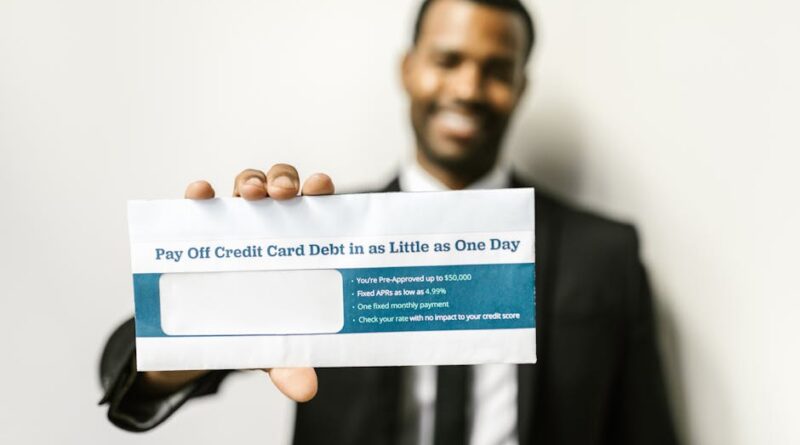Student Loan Forgiveness Programs 2025: 7 Essential Options for Debt Relief
Navigating student loan debt can feel overwhelming, especially with rising education costs and economic uncertainties. In 2025, student loan forgiveness programs offer a lifeline for millions of borrowers seeking relief. These initiatives, backed by federal and state governments, aim to make higher education more accessible by forgiving portions or all of qualifying loans. Whether you’re a recent graduate or a long-term borrower, understanding these options can transform your financial future.
This guide breaks down the essential student loan forgiveness programs available in 2025, helping you identify which might apply to your situation. From public service workers to those in income-driven repayment plans, relief is within reach. Stay informed on updates from the Department of Education to maximize your chances.
Table of Contents
What Is Student Loan Forgiveness?
Student loan forgiveness refers to programs that cancel or reduce the amount you owe on federal or private student loans. These aren’t free gifts; they require meeting specific criteria like employment in public service or making consistent payments under certain plans. In 2025, with inflation cooling and policy shifts, more borrowers qualify than ever before.
The concept gained traction during the pandemic when temporary pauses highlighted the burden of student debt. Today, forgiveness targets underserved sectors to encourage careers in teaching, nursing, and nonprofits. It’s a strategic tool for financial planning, potentially saving borrowers tens of thousands.
Unlike refinancing, which changes loan terms, forgiveness eliminates debt entirely for eligible individuals. However, tax implications can apply to forgiven amounts, treated as taxable income in some cases. Always consult a tax advisor to understand your obligations.
Federal loans are the primary focus, as private lenders rarely offer forgiveness. If you have a mix, prioritize federal options first. Programs evolve, so checking annual updates is crucial for 2025 applicants.

History and Evolution of Forgiveness Programs
Student loan forgiveness traces back to the 1960s with the Higher Education Act, but modern programs like PSLF launched in 2007. Recent Supreme Court rulings have reshaped broad forgiveness plans, shifting focus to targeted relief. In 2025, expect refined IDR plans and expanded teacher incentives.
Over 4 million borrowers have received forgiveness to date, totaling billions in relief. This momentum continues as policymakers address the $1.7 trillion student debt crisis. For many, it’s not just debt reduction—it’s a path to homeownership and retirement savings.
Critics argue forgiveness benefits higher earners, but data shows most recipients are middle-income public servants. Understanding the nuances helps demystify the process and set realistic expectations.
Top Student Loan Forgiveness Programs in 2025
2025 brings a robust lineup of student loan forgiveness programs tailored to different professions and financial situations. Here’s a deep dive into the seven essential ones, starting with the most popular.
Public Service Loan Forgiveness (PSLF)
PSLF forgives the remaining balance on Direct Loans after 120 qualifying payments (10 years) while working full-time for a government or nonprofit employer. In 2025, the program’s temporary waiver ends, but a new IDR adjustment credits past payments retroactively.
Over 800,000 borrowers have benefited, with average forgiveness around $100,000. Eligibility requires employment verification and staying in qualifying jobs. It’s ideal for teachers, social workers, and military personnel.
Recent expansions include part-time roles and medical/dental residencies. Track your progress via the PSLF Help Tool on the Federal Student Aid website.
Income-Driven Repayment (IDR) Forgiveness
IDR plans like SAVE, PAYE, and IBR cap payments at 10-20% of discretionary income, forgiving the rest after 20-25 years. The SAVE plan, updated in 2025, lowers payments for low earners and accelerates forgiveness for smaller balances.
Millions are on track for relief, but delays in processing have frustrated applicants. In 2025, faster approvals and interest subsidies make IDR more appealing. It’s perfect if your income fluctuates or you’re pursuing advanced degrees.
Switching plans is straightforward, but recertify annually to avoid payment spikes. This program shines for those with family obligations or career changes.
Teacher Loan Forgiveness
For educators in low-income schools, this forgives up to $17,500 on Direct or FFEL Subsidized/Unsubsidized Loans after five consecutive years of teaching. 2025 enhancements include higher limits for STEM subjects and rural areas.
Over 100,000 teachers have qualified, easing entry into underfunded districts. Combine it with PSLF for double benefits if eligible. Application windows open yearly, so mark your calendar.
This program addresses teacher shortages, offering stability amid rising living costs. Verify your school’s status via the TCLI directory.
Perkins Loan Cancellation
Though the Perkins program ended in 2017, existing borrowers in public service can cancel up to 100% of loans over five years. In 2025, focus shifts to consolidation for non-Perkins holders seeking similar relief.
It’s niche but valuable for older loans. Rates of forgiveness reach full principal plus interest for qualifying jobs like firefighting or law enforcement.
Check your loan servicer for remaining eligibility, as many have already forgiven balances.
Total and Permanent Disability (TPD) Discharge
Borrowers with qualifying disabilities receive full forgiveness on federal loans. 2025 streamlines the process with automatic discharges via Social Security data.
No repayment period required, and it’s tax-free under current rules. Over 500,000 have been discharged, providing peace of mind during health challenges.
Documentation from VA or physicians suffices; appeals are available if denied.
Other Niche Programs: AmeriCorps and Military
AmeriCorps Education Awards forgive Segal loans or contribute to payments. Military members access VA-specific relief, including 36 months for active duty.
In 2025, these programs integrate better with PSLF. Volunteers and veterans should explore stacking benefits for maximum impact.
State programs, like New York’s teacher forgiveness, add layers of relief. Research local options for comprehensive coverage.

Eligibility Requirements for Forgiveness
Qualifying for student loan forgiveness demands meeting strict criteria, but 2025 updates make it more accessible. Start by confirming your loan type—only federal Direct Loans qualify for most programs.
Income plays a key role in IDR plans; use the official calculator to estimate payments. Employment verification is mandatory for PSLF and teacher programs—submit annually via your servicer.
Credit checks aren’t required, unlike private loans, but maintaining on-time payments builds your score. For TPD, medical certification from approved sources is essential.
Common pitfalls include consolidation errors or switching to ineligible repayment plans. Review your history on StudentAid.gov to ensure compliance.
Income and Family Size Considerations
IDR adjusts based on adjusted gross income and household size, forgiving more for larger families. In 2025, poverty guidelines update annually, potentially lowering thresholds.
Self-employed borrowers report variable income, which can reduce payments during lean years. Spouses’ income factors in unless filing separately.
Track changes like job loss or marriage, as they trigger recertification and possible forgiveness acceleration.
Employment and Service Verification
PSLF requires 30+ hours weekly at eligible employers—use the PSLF Help Tool for confirmation. Teachers need state certification and low-income school assignment.
Nonprofits must be 501(c)(3); for-profits rarely qualify. Document everything to avoid denials during audits.
2025 brings digital submissions, speeding up verification. Stay proactive to hit the 120-payment mark.
How to Apply for Student Loan Forgiveness
Applying for student loan forgiveness is straightforward but requires organization. Begin by logging into StudentAid.gov to view your loans and servicer.
For PSLF, submit the Employment Certification Form annually or after job changes. IDR applications involve income documentation—use IRS tax returns or pay stubs.
Teacher forgiveness requires a separate DOE application post-five years. Track status via the dashboard; processing times average 3-6 months in 2025.
If denied, appeal within 30 days with additional evidence. Many succeed on resubmission after fixing minor errors.
Step-by-Step Application Guide
Step 1: Consolidate non-Direct Loans if needed via Direct Consolidation Loan application. Step 2: Choose your program and gather docs—pay stubs, tax forms, employment letters.
Step 3: Submit online or mail to your servicer. Step 4: Monitor for confirmation and continue payments. Step 5: Upon approval, expect discharge within 90 days.
Pro tip: Use free counseling from the National Foundation for Credit Counseling to navigate complexities. For more on managing debt, check out How to Pay Off Credit Card Debt Fast: 7 Proven Strategies.
Avoid scams promising instant forgiveness—stick to official channels. In 2025, enhanced fraud protections safeguard applicants.

Pros, Cons, and Alternatives
Student loan forgiveness pros include massive debt reduction, freeing up cash for savings or investments. It promotes public service careers and economic mobility. In 2025, tax exemptions on certain forgiven amounts add appeal.
Cons involve long wait times, strict eligibility, and potential tax hits. Not all loans qualify, and private debt remains untouched. If ineligible, explore alternatives like employer repayment assistance or refinancing.
For broader financial health, consider Saving vs Investing in 2025 — Which Gives Better Returns? to build wealth post-forgiveness.
Tax Implications and Financial Planning
Forgiven amounts may be taxable, except under PSLF or during disasters. Budget for a potential IRS bill by setting aside 20-30% of forgiven debt. Use tools like the IRS withholding estimator.
Post-forgiveness, redirect payments to an emergency fund or retirement. This shift can boost net worth significantly within years.
Consult How to Qualify for a Mortgage: 7 Essential Steps in 2025 if homeownership is next—debt relief improves your DTI ratio.
Alternatives if Forgiveness Isn’t an Option
Refinancing with private lenders lowers rates but forfeits federal protections. Debt settlement negotiates reductions, though it impacts credit. For income challenges, seek forbearance or deferment temporarily.
Side hustles or budgeting apps accelerate payoff. Visit the Federal Student Aid website for official guidance and calculators.
Ultimately, student loan forgiveness in 2025 empowers borrowers to reclaim control. Assess your situation, apply diligently, and pair with smart habits for lasting freedom. With proactive steps, debt doesn’t have to define your future.

Pingback: 10 Essential Side Hustles to Pay Off Debt Faster in 2025 - The Money Beat